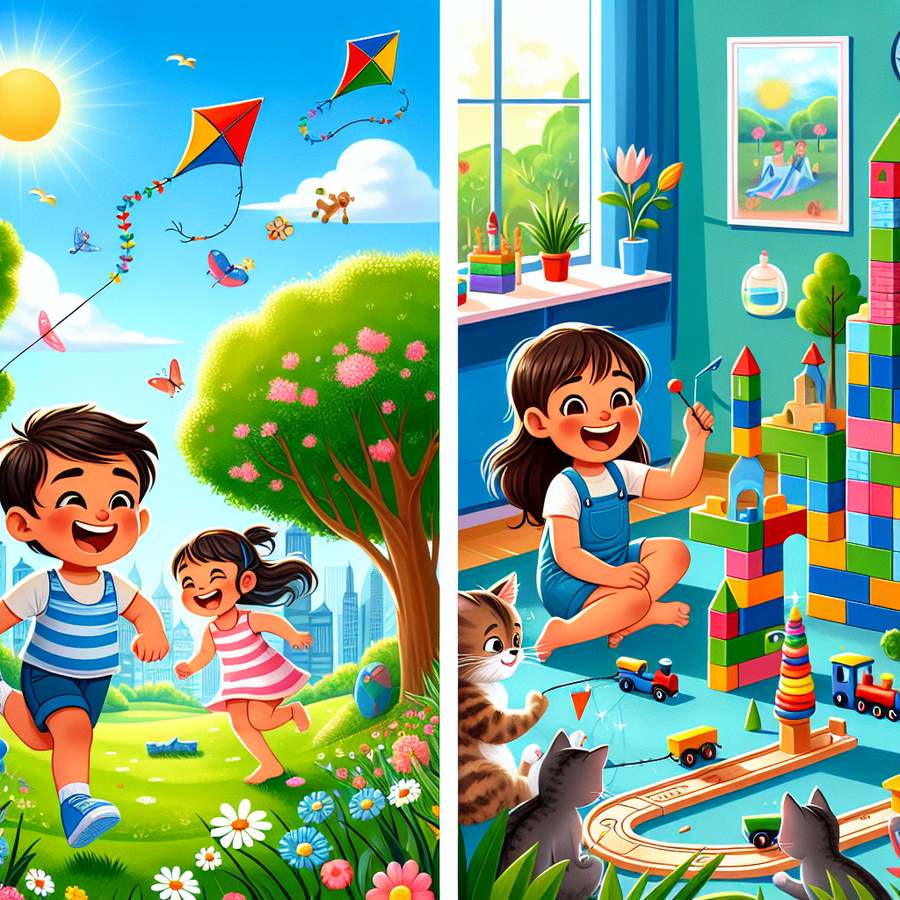Outdoors versus indoors play: Effect on early childhood development has been a topic of extensive research and discussion among parents, educators, and researchers alike. This comparison delves into how these two environments play pivotal roles in shaping children’s physical, cognitive, and emotional development from an early age.
The Significance of Outdoor Play in Child Development
Outdoor play is not just about getting fresh air; it’s a fundamental component of healthy development. The National Center for Biotechnology Information underscores the importance of physical activity and outdoor play in promoting physical health, including the development of motor skills, cardiovascular health, and obesity prevention.
Furthermore, outdoor play encourages children to engage in unstructured play, which is crucial for fostering creativity, problem-solving skills, and independence. According to a link from our library, the role of outdoor play in physical and cognitive development further emphasizes how such activities support not only physical but also cognitive growth, including attention span and executive functioning skills.
Indoor Play and Its Role in Developmental Growth
While outdoor play is essential, indoor play holds its unique set of benefits for early childhood development. Indoor activities often involve puzzles, games, and toys that can enhance cognitive abilities, including problem-solving skills, memory, and language development. The controlled environment indoors also offers a safe space for activities that require concentration and fine motor skill development.
Indoor play can be highly beneficial for emotional and social development. Activities such as reading, arts and crafts, and pretend play support emotional expression, empathy, and social skills. Insights from encouraging exploration and curiosity in infants, highlight the importance of indoor play in stimulating intellectual curiosity and creativity.
Outdoors versus indoors play: Effect on early childhood development
Comparing outdoors versus indoors play reveals that both have significant but distinct impacts on early childhood development. Outdoor play is unparalleled in promoting physical health and encouraging active, exploratory behaviors. Meanwhile, indoor play excels in fostering cognitive, emotional, and social development through structured activities and play.
It’s the balance between outdoor and indoor play that supports a holistic approach to child development. Integrating both environments into a child’s routine can lead to well-rounded growth. Links such as the role of outdoor play in physical and cognitive development and encouraging exploration and curiosity in infants provide valuable resources for parents and educators aiming to optimize this balance.
Practical Tips for Balancing Outdoor and Indoor Play
To achieve the optimal balance between outdoor and indoor play, consider the following tips:
- Ensure a daily dose of outdoor play, weather permitting, to boost physical activity and exploration.
- Incorporate indoor activities that promote cognitive and emotional development, such as puzzle-solving, reading, and artistic endeavors.
- Utilize resources like building a reading routine for language and emotional development to enhance indoor educational activities.
- Encourage free play, allowing children to use their imagination and creativity both outdoors and indoors.
- Monitor and limit screen time, ensuring that digital play is educational and interactive.
By valuing and incorporating both outdoor and indoor play into a child’s daily routine, parents and educators can foster a nurturing environment that supports comprehensive development across all domains.
In conclusion, outdoors versus indoors play: Effect on early childhood development offers a compelling look into the multifaceted ways these play environments contribute to a child’s growth. Embracing the strengths of each and striving for a balanced approach can pave the way for a well-rounded and fulfilling developmental journey.













